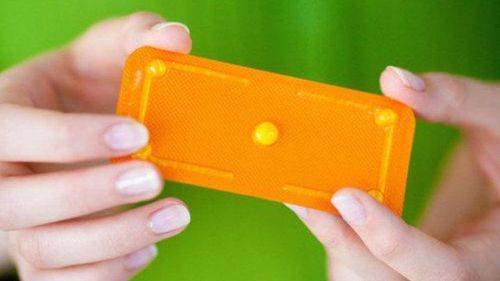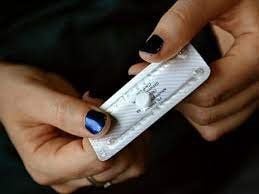This is an automatically translated article.
Early humans tried a variety of ways to prevent pregnancy, from animal feces and poisons, to citrus fruits and blocks of wood. Before modern medicine brought birth control methods like the pill and patch, couples used more unusual methods of birth control.
1. Contraception through the period
In the past, some of the following methods of contraception were commonly used by humans:
Iron chastity belts with locks and keys were often connected to medieval torture devices, but were not common until the 1800s. Fashion magazines advertised them as a protection against rape. During the previous Industrial Revolution, women in Britain and France entered the workforce in record numbers, some of whom purchased virginal panties to avoid sexual assault. Men sometimes want their partners to wear them to avoid infidelity and masturbation. Wearing metal can aggravate the condition, but drinking it is extremely dangerous. Thousands of years ago, Chinese women drank liquid lead and mercury as birth control. Terrible, uncontrolled side effects like infertility, kidney failure, brain damage can lead to death. The woman jumps back 7 times after having sex and drinks the water the blacksmith used to cool the metal as one of the methods of contraception in the past. Condoms were first mentioned in 3000 BC. When King Minos of Crete from Homer's Illiad used a goat's bladder to protect his wife from "snakes and scorpions" in his semen. Through the ages, people have also used linen, sheep intestines, and fish balls to prevent pregnancy. Long before the latest "Share a Coke" ad campaign, some women would open the can for another refreshing beverage. In 1985, Harvard experts reported that soda killed some sperm in a test tube. Prior to stockpiling 6 cans for use as a spermicidal douche, subsequent studies could not prove results. Lysol antiseptic is used to disinfect the vagina. Household disinfectants were once marketed as a douche to prevent infections and odors. The Comstock Act of 1873, which banned the use of unethical items, was disguised and sold as feminine hygiene products. The ads made Lysol soap the best-selling birth control pill during the Great Recession. But not surprisingly, it causes inflammation and burning and even death. In the Middle Ages, some people wore amulets made from mule earwax, mink testicles, and a black cat's right rib. Long before the diaphragm, some women created rudimentary sperm barriers with bizarre materials. For example, the Ancient Egyptians and Indians used crocodile and elephant droppings. Africans make uterine plugs from grass or chopped cloth. Japanese prostitutes used bamboo tissues. One of the first prescriptions for birth control was recorded on a papyrus from 1550 BC. This is a stick contraceptive made from seed wool soaked in ground hemp, dates and honey.

Có rất nhiều các biện pháp tránh thai
2. The best method of birth control
The best birth control needs to be the most effective and fit your lifestyle. In general, the male condom plus another form of birth control is the most effective way to prevent pregnancy.
3. Long-term contraception
Here are methods you and your partner can use for long-term contraception:
Diaphragm: This goes into your body before you have sex to prevent sperm from reaching an egg . Hormonal contraception: This type changes a woman's body chemistry. Depending on the hormone, it prevents the ovaries from releasing an egg, thickens the mucus around the cervix to keep sperm from reaching the egg, or thickens the lining of the uterus. Medical procedure: A method of changing the body. Choosing the right birth control method is probably a concern for many people. Choosing a birth control method takes time between you and your doctor to find the most suitable method. Therefore, consult your doctor if you do not know how to prevent pregnancy that is safe and right for you.
Please dial HOTLINE for more information or register for an appointment HERE. Download MyVinmec app to make appointments faster and to manage your bookings easily.













